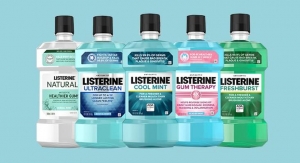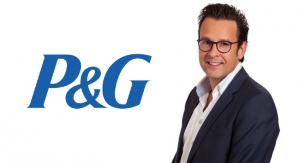By Jamie Matusow, Editor-in-Chief , with Joanna Cosgrove, Contributing Editor11.02.18
Update: Johnson & Johnson ranks at #10 on our latest report Top 20 Global Beauty Companies 2021.
Johnson & Johnson is #9 on this year's list of Top Global Beauty Companies.
Below is a look at the company’s 2018 highlights, recent acquisitions, best-selling brands, and latest innovations.
Corporate Sales
$76.5 billion
Beauty & Baby Care Sales
$6.1 billion (Beauty $4.2 billion; Baby Care: $1.9 billion)
(FY 2017 Beauty & Baby Care Sales: $5.9 billion)
Key Personnel
Major Products/Brands
New Products
J&J Finds New Ways To Grow
Johnson & Johnson continues to find new ways to grow its 124-year-old brand, despite ongoing talc-ovarian cancer litigation and competitive brand pressures, both of which took a toll on baby care sales, which dove 4.2% to $1.9 billion. Offsetting the loss was an 8% volume gain that boosted overall corporate sales by 6.3%. The company’s beauty product segment was also strong, thanks to a reliable performance by J&J’s tried-and-true Neutrogena skincare label, as well as interest in new acquisitions Vogue International and Dr. Ci Labo. The company also acquired La Lumiére and NeoStrata brands.
The acquisitions, in combination with consumer trends in health & beauty, the aging population and naturals/organics should bode well for J&J going forward, according to Jorge Mesquita, executive vice president, worldwide and chairman, J&J Consumer, who told analysts that those trends (and others) helped J&J Consumer deliver a 3.4% CAGR from 2014-2016.
News of Note in 2018
In May, three years of R&D culminated with the relaunch of a reboot of J&J’s iconic baby care line to help combat sales that had slid a total of 20% since 2011. What’s different? The company paid close attention to the needs and wants of eco-conscious Millennial moms, and are playing up its formulas, 96% of which are now naturally derived.
Products are free of dyes (the once gold-colored formula is now clear and packaged in a translucent yellow bottle), parabens (removed in 2015) and phthalates (removed in 2009). In fact, J&J cut the number of formula ingredients by half, swapping out soybean oil and mineral oil for simpler ingredients like coconut oil, and made its ingredient lineup 100% transparent to consumers. Also different is the packaging, which is now ergonomically made for easier one-handed use and is easier to recycle.
In light of the ongoing talc lawsuit disaster, the company also launched new baby powder products that contain cotton, called CottonTouch, that are sold alongside its existing products made with talc and cornstarch.
In February, J&J presented new scientific research at the 2018 American Academy of Dermatology annual meeting focused on advances in addressing skin health, including photoprotection, acne, cleansing and skin microbiome health.
In Q1 2018, worldwide consumer sales increased 5.3% to $3.4 billion. J&J indicated the primary contributors to the growth were OGX, Neutrogena and Aveeno. Q1 beauty sales were also a bright spot, climbing 10.4% to $1 billion. Baby care sales, however, continued to fall 14.2% to $97 million.
By Q2 ending in July, the company’s worldwide consumer sales had grown 0.7% to $3.5 billion, driven by OTC and digestive health products, as well as international beauty products, primarily Neutrogena, OGX and Dr. Ci Labo, partially offset by lower sales of baby care products. During the quarter, the company divested its anti-dandruff shampoo brand Nizoral and other ketoconazole-based shampoo brands.
Read Next: Amorepacific is #10
Johnson & Johnson is #9 on this year's list of Top Global Beauty Companies.
Below is a look at the company’s 2018 highlights, recent acquisitions, best-selling brands, and latest innovations.
Corporate Sales
$76.5 billion
Beauty & Baby Care Sales
$6.1 billion (Beauty $4.2 billion; Baby Care: $1.9 billion)
(FY 2017 Beauty & Baby Care Sales: $5.9 billion)
Key Personnel
- Alex Gorsky, chairman and chief executive officer
- Dominic J. Caruso, executive vice president, chief financial officer
- Jorge Mesquita, executive vice president, worldwide chairman, consumer
- Sandra E. Peterson, group worldwide chair
- Michael Sneed, worldwide vice president, global corporate affairs and chief communication officer
- Jennifer Taubert, company group chairman, Johnson & Johnson
- Kathryn E. Wengel, worldwide vice president, Johnson & Johnson supply chain
Major Products/Brands
- Johnson’s baby products, Desitin, Aveeno, Clean & Clear,
- Dabao, Johnson’s, Bebe, Le Petite Marseillais, Lubriderm,
- Neutrogena, OGX, RoC, Sundown, Rogaine, Listerine oral care
- Vogue International, NeoStrata, La Lumiere, Dr. Ci Labo, and Hipoglós
New Products
- Aveeno Absolutely Ageless Pre-Tox leave-on day mask lotion broad spectrum SPF 30
- Clean & Clear Acne Triple Clear
- Neutrogena Rapid Wrinkle Repair regenerating cream
- Neutrogena Hydro Boost water gel lotion and mascara
- Neutrogena Skin360 Kerry Washington essential cheek palette and essential eye palette
- Johnson’s CottonTouch baby wash and lotion
J&J Finds New Ways To Grow
Johnson & Johnson continues to find new ways to grow its 124-year-old brand, despite ongoing talc-ovarian cancer litigation and competitive brand pressures, both of which took a toll on baby care sales, which dove 4.2% to $1.9 billion. Offsetting the loss was an 8% volume gain that boosted overall corporate sales by 6.3%. The company’s beauty product segment was also strong, thanks to a reliable performance by J&J’s tried-and-true Neutrogena skincare label, as well as interest in new acquisitions Vogue International and Dr. Ci Labo. The company also acquired La Lumiére and NeoStrata brands.
The acquisitions, in combination with consumer trends in health & beauty, the aging population and naturals/organics should bode well for J&J going forward, according to Jorge Mesquita, executive vice president, worldwide and chairman, J&J Consumer, who told analysts that those trends (and others) helped J&J Consumer deliver a 3.4% CAGR from 2014-2016.
News of Note in 2018
In May, three years of R&D culminated with the relaunch of a reboot of J&J’s iconic baby care line to help combat sales that had slid a total of 20% since 2011. What’s different? The company paid close attention to the needs and wants of eco-conscious Millennial moms, and are playing up its formulas, 96% of which are now naturally derived.
Products are free of dyes (the once gold-colored formula is now clear and packaged in a translucent yellow bottle), parabens (removed in 2015) and phthalates (removed in 2009). In fact, J&J cut the number of formula ingredients by half, swapping out soybean oil and mineral oil for simpler ingredients like coconut oil, and made its ingredient lineup 100% transparent to consumers. Also different is the packaging, which is now ergonomically made for easier one-handed use and is easier to recycle.
In light of the ongoing talc lawsuit disaster, the company also launched new baby powder products that contain cotton, called CottonTouch, that are sold alongside its existing products made with talc and cornstarch.
In February, J&J presented new scientific research at the 2018 American Academy of Dermatology annual meeting focused on advances in addressing skin health, including photoprotection, acne, cleansing and skin microbiome health.
In Q1 2018, worldwide consumer sales increased 5.3% to $3.4 billion. J&J indicated the primary contributors to the growth were OGX, Neutrogena and Aveeno. Q1 beauty sales were also a bright spot, climbing 10.4% to $1 billion. Baby care sales, however, continued to fall 14.2% to $97 million.
By Q2 ending in July, the company’s worldwide consumer sales had grown 0.7% to $3.5 billion, driven by OTC and digestive health products, as well as international beauty products, primarily Neutrogena, OGX and Dr. Ci Labo, partially offset by lower sales of baby care products. During the quarter, the company divested its anti-dandruff shampoo brand Nizoral and other ketoconazole-based shampoo brands.
Read Next: Amorepacific is #10



























